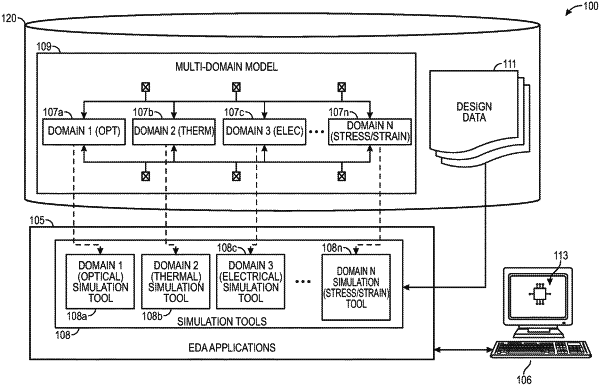| CPC G06F 30/367 (2020.01) [G06F 21/62 (2013.01)] | 20 Claims |

|
1. A method implemented with a processor, comprising:
generating a multi-domain simulation model for a photonic device, the multi-domain simulation model comprising a netlist of elements of a first domain of the model coupled with a netlist of elements of a second domain of the model, the netlist of elements of the first domain including a first element, the netlist of elements of the second domain including a second element, the first domain and the second domain representing different physical characteristics of the photonic device, a same component of the photonic device is represented according to the first element of the first domain and the second element of the second domain, the first domain or the second domain pertaining to an optical model of the photonic device;
performing simulation on the multi-domain simulation model by simulating the first domain with a first simulation tool and simulating the second domain with a second simulation tool, wherein the first simulation tool is a different domain simulator from the second simulation tool, and wherein the simulation in the first domain and the simulation in the second domain are coupled via one or more connections connecting the first element and the second element; and
generating physical effects for the photonic device based on the simulation of the multi-domain simulation model.
|